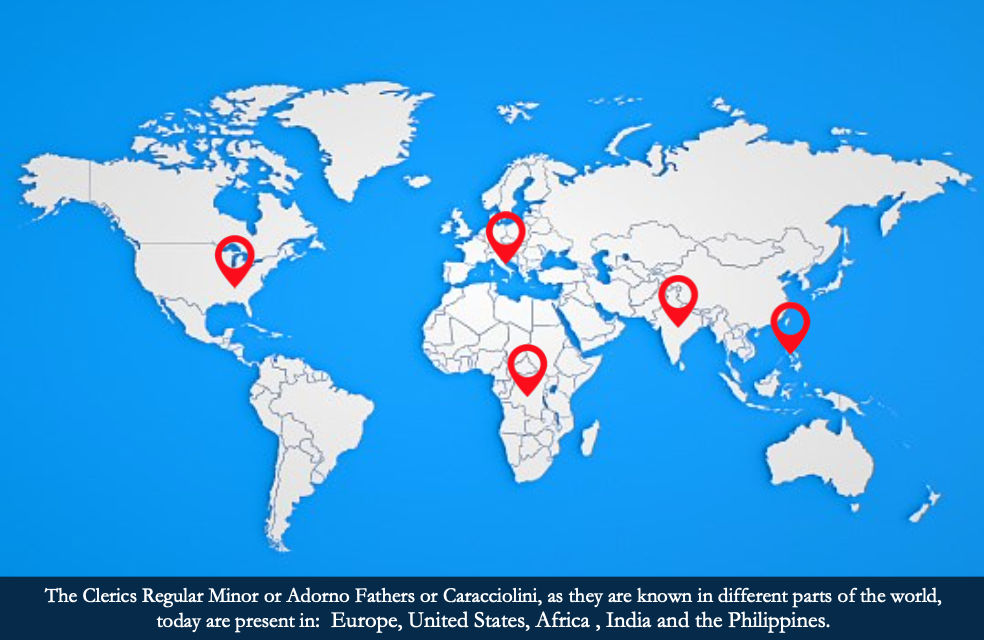By 1950 the two World Wars were over. At the Paris Peace Conference (February 10, 1947), Italy and a number of other Nations had signed a treaty of cessation of all hostilities. A desire for peace and reconciliation was pervasive throughout Europe and indeed in the world. The Church also looked forward to the possibility of a new era for evangelization, which has always been part of her constitutive mission.
As a matter of fact, even after World War I, Pope Benedict XV had called for a renewal of Catholic Missions in the Church. In 1919 he had published an Encyclical, Maximum illud, in which he identified three priorities for future Catholic missionary activities.
-The recruitment and promotion of a native clergy in missionary lands.
-The renunciation of nationalistic concerns among European missionaries.
-The recognition of dignity and worth of the cultures being evangelized .
These principles were already known in the Church, but were re-defined by Pope Benedict and confirmed by the policies of his successor, Pope Pius XI. Pope Pius in 1926 consecrated the first six indigenous Chinese bishops, in 1927 the first Japanese Bishop of Nagasaki, and later, by 1939, forty missionary dioceses were headed by indigenous bishops. The local born mission priests had almost tripled to over 7,000, and 200 Apostolic Vicariates and Prefectures had been created in missionary territories.
Just as important, Missiology became an established subject for study and research in key Roman Colleges. This renewed interest was not ignored by the Clerics Regular Minor, even though at that time they did not have the resources of personnel and the means to respond.
Pope Pius XII was elected in 1939 and headed the Church during and after World War Il. He was a great Pope in many respects – the first Pope to have had access to and extensive use of modern means of communication such as the telephone, radio and television. He was prolific in writing a number of Encyclicals and delivering radio addresses clarifying many aspects of our faith, particularly the nature and the mission of the Church (Mystici Corporis). In 1950 he invited Christians to participate in a Holy Year of Grace, during which unprecedented numbers of people, Catholics and non-Catholics, thronged to Rome from every corner of the world, and recalling to mind the universality of the Church. Again, the thought crossed the mind of the Clerics Regular Minor to expand to new lands and cultures.
But it was the Second Vatican Council that proved to be the most revolutionary event since the Reformation. Geographically at least, it was the most Catholic Council in the history of the Church: 2,800 Bishops attended, Orthodox and Protestant observers participated and substantially influenced the proceedings. Our Superior General, Father Fiorello Piersanti, CRM also attended, and all the Clerics Regular Minor followed the Council’s discussions and read reflectively its Decrees. Time and again, they were challenged to reshape the Order in the new ways suggested by the Council Fathers.
The first priority they saw was the necessity of revising and updating the Constitutions according to the spirit of the Council’s Decrees and the directives of the new Canon Law. They also heeded the appeals of the Popes for a new evangelization of the world. lt is perhaps because of these appeals from Pope Paul VI and Pope Saint John Paul II that the Order opened itself to the Missions ad gentes in the strict sense. In spite of our modest numbers of religious members, we offered our availability and resources for three missionary activities: in the D. R. of Congo, Africa (1984), in Kerela, India (1992) and in Camarines Norte, Philippines (2002).
The Order, which had been reborn by the middle of the 20th century, was looking forward to expansion and growth as it approached the new 21st Century and on. The genesis and development of this Missionary outreach, however, must be the topic of another study.
By Fr. Nicholas Capetola, CRM
Ramsey, New Jersey – 2017
(From: Padre Nicola Capetola, CRM: Re-birth of the Clerics Regular Minor – 1900-1959 )

